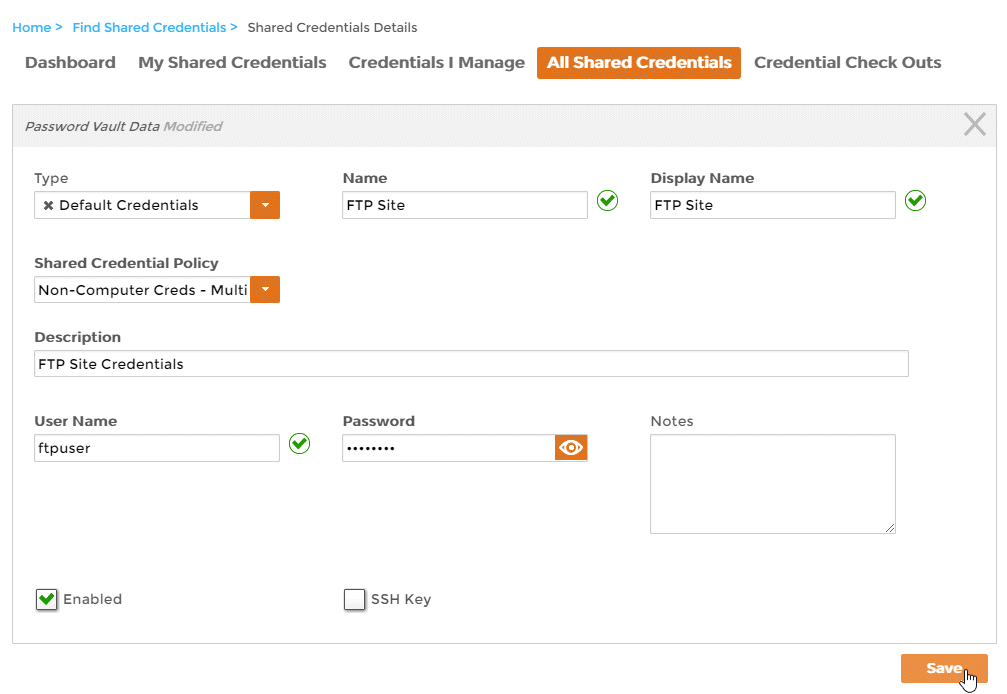...
- In the navigation sidebar of the EmpowerID Web interface, expand Resources and click Shared Credentials.
- From the Shared Credentials page, click the All Shared Credentials tab and then click the Add Shared Credential button.
- Select the appropriate credential type from the Type drop-down.
- Enter a name for the credential in the Name and Display Name fields.
- Click the Shared Credential Policy drop-down and select the appropriate one to link to the credentials. Here are the default options:
- Non-Computer Creds - Multi-Check-Out - No Password Reset — Select this policy to create credentials for an account where more than one check out is allowed and you do not want EmpowerID to reset the password when a user checks in the credentials.
- Non-Computer Creds - No Approval, No Multi Check-Out with Password Reset — Select this policy to create credentials for an account where more than one check out is not allowed, no approval is required, and you want EmpowerID to reset the password when a user checks in the credentials.
- Non-Computer Creds - No Multi-Check-Out with Password Reset — Select this policy to create credentials for an account where more than one check out is not allowed and you want EmpowerID to reset the password when a user checks in the credentials. Please note that this policy type is only valid for use with user accounts with passwords that have been vaulted in EmpowerID. The user account must belong to a domain or account store that has been inventoried by EmpowerID.
- Service Account with Scheduled Password Reset — Select this policy for credentials for a Windows Service account or IIS App pool identity.
When you select this policy, EmpowerID resets the password against all Windows servers in your environment that have Windows Services or App Pools. Please note that this policy type is only valid for use with service accounts with passwords that have been vaulted in EmpowerID. The service account must belong to a domain or account store that has been inventoried by EmpowerID.Note When using password reset, if the user checks out the credential but never actually sees the details and does not use it to connect to a privileged session, then the password is not reset on check in.
- Type a description in the Description field.
- Type the user name for the account you are vaulting in the User Name field.
- Type the password for the account you are vaulting in the Password field.
- Click Save.
- If you have not yet entered your master password for this session, EmpowerID prompts you to do so. Enter your master password and click OK.
- If you have not yet created a master password for yourself, EmpowerID prompts you to do so. Enter a password in the Password and Confirm Password fields and click OK.
...



